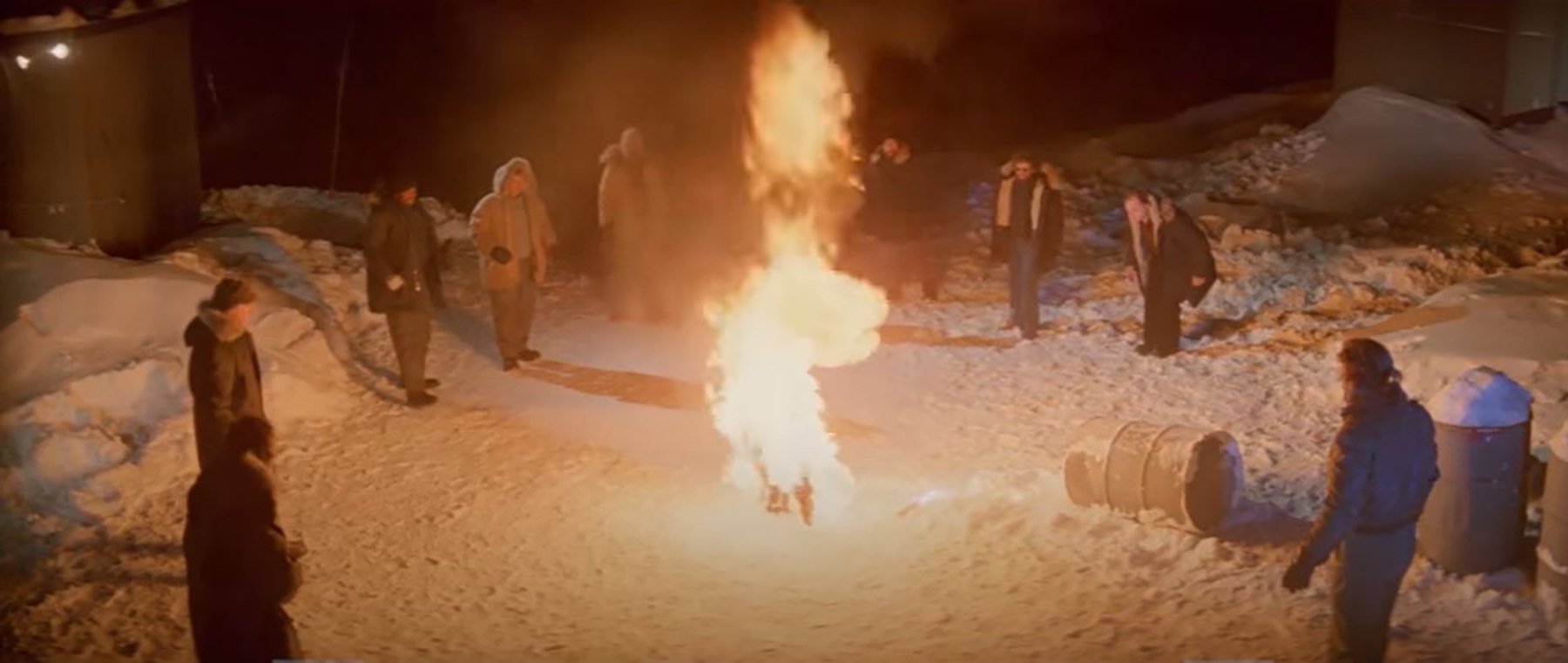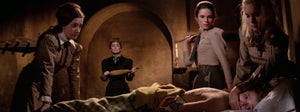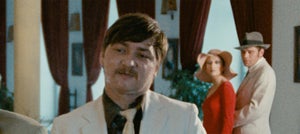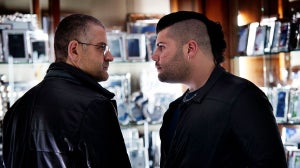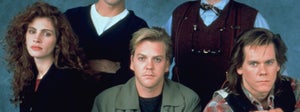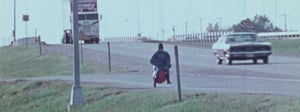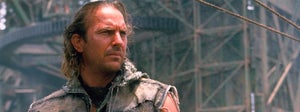
“Even in our earliest works of fiction, we told stories of mythological beasts with grotesque and abhorrent qualities.” ― John Carpenter
Much like its eponymous alien creature, John Carpenter’s The Thing is a survivor. Reeling from its nihilism and abhorrent nature, the ‘icy reception’ was somewhat of an understatement as critics took a flamethrower to the film on its initial release in 1982. Pussies. Again, we are reminded of the lifeform’s ‘adaptable’ nature; Carpenter’s film can be whatever we want it to be, from monstrous myth to allegorical tale. But in its purest form, The Thing is an entertaining and unrivalled example of genre filmmaking; an (ice-laden) mix of macabre magic show and gut-wrenching rollercoaster ride. There are 101 reasons to fear the film. Here are ten reasons to love…
10. Paranoid parallels
Suspicion feeds paranoia. As a result, the high tension throughout The Thing becomes all the more relatable with its pandemic parallels of ‘alien’ infection and subsequent isolation. The blood test scene, in particular, serves as a catalyst of fear in which the surviving members of Outpost 31 await their results tied to a “fucking couch”. Here the mistrust amongst the men turns to sheer panic and terror in an explosion of head-splitting body horror. The imagery and benchmark effects tap into the “Cold War” (within); analogy nothing new as critical responses of the time even drew on comparisons to the AIDS pandemic ― whether the highly infectious imagery was subconscious or not ― the foreign and “foreign body” laid bare.
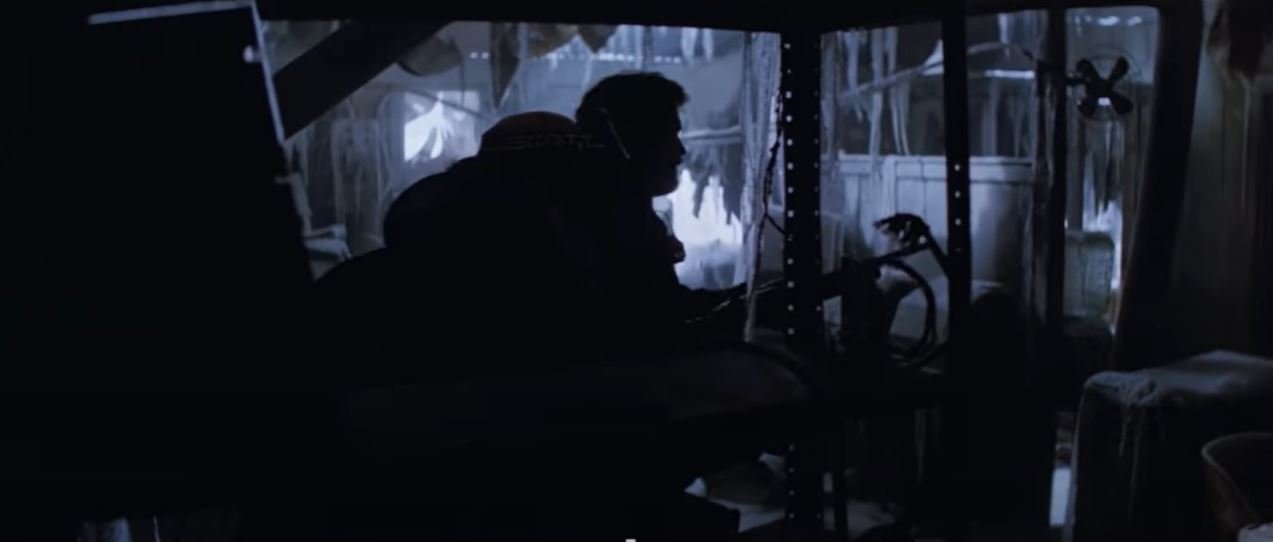
9. Faithful adaptation
John Carpenter’s decision in returning to the frozen roots of John W. Campbell Jr.’s original 1938 novella Who Goes There? was originally a snap decision to avoid competing with (and ‘remaking’) Hawks and Nyby’s ’51 version, The Thing from Another World. A far cry from the Frankenstein vegetable, in Carpenter’s adaptation it is the ‘alien autopsy’ that forms the major lynchpin and highlights how accurately it captures the atmosphere of the research station; the same scene that opens the original novella. As much as Rob Bottin’s macabre designs capture those first couple of pages, it is just as much about the smell and distinct reactions between the men, who are also accurately painted based on their literary counterparts. However, a great deal of the DNA can be attributed to H.P. Lovecraft’s novella At the Mountains of Madness. Written in 1931, but not published until 1936 in Astounding Stories, it is no coincidence that this tale of cosmic horror and ancient alien discovery in the Antarctic would have influenced Campbell; becoming editor of the same magazine (retitling it Astounding Science Fiction) the following year.
8. Location, location, location
Once we see a glimpse of a ‘flying saucer’ plummeting towards Earth (and the ’51 title homage), there is an almost blinding contrast between the baron white landscape and the black void of space. This is the bottom of the world, a harsh environment that already presents its challenges, but also a distinct sense of ‘discovery’ we associate with untamed frontiers. Already ‘alienated’, anyone conducting scientific research in these regions is here to discover something new within a unique ecosystem; how all kinds of organisms are able to thrive withstanding and surviving the deep cold. In The Thing, Antarctica is less a barometer of (climate) change and more a barometer of fear.
7. Kurt and the ensemble
Except for the chess cameo (Adrienne Barbeau), Carpenter makes no apologies for his all-male cast. Each character is distinct in their role from doctor to dog handler, helicopter pilot to assistant biologist, the ‘research’ roles in particular only becoming the mad doctors and scientists once the paranoia sets in. For the most part, there is a blue-collar vibe that makes these ordinary Joes all the more relatable; each of them painted like men lost in their own personal hell, placing them mostly on a (white) level playing field. But it is the small details that bring them to life, whether a roller skating cook or chess playing pilot; ice-cool Kurt ― the hat, the beard, the shades, a bottle of J&B at the ready ― keeping it together with his no-nonsense attitude.
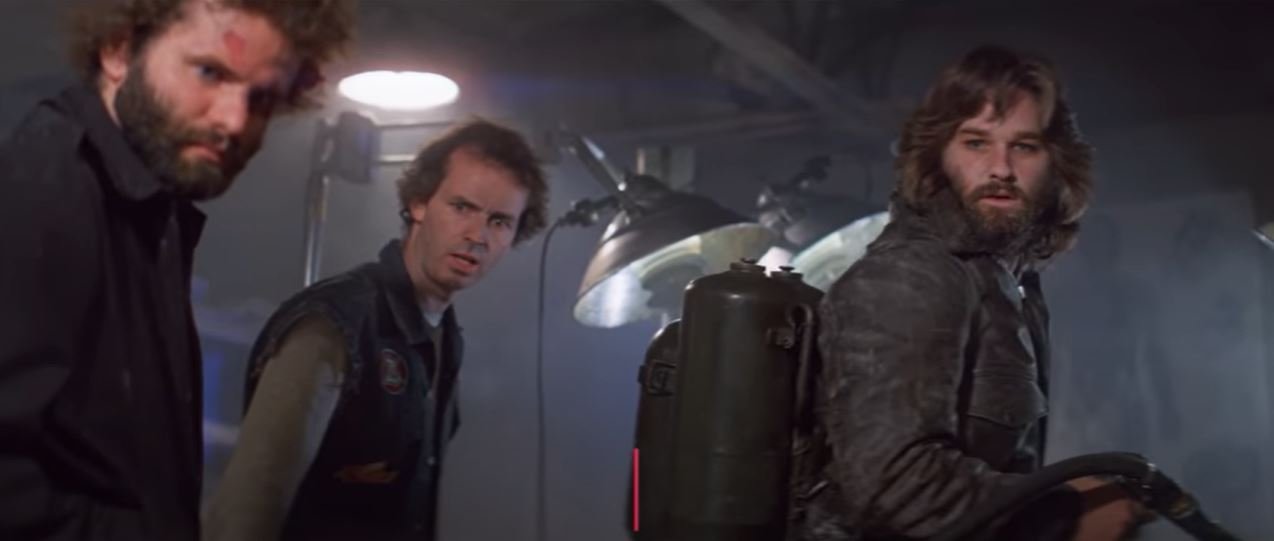
6. Maestros of music and horror
Although Carpenter struggled to relinquish control over the score, his first big studio feature allowed the opportunity to work with, arguably, the greatest film composer of all time, Ennio Morricone. With no footage shared, the music grew out of a purely collaborative process between two masters of their craft; Morricone capturing Carpenter’s sparse paired back sound through shared notes and the director’s guidance. Ironically, the foreboding score itself becomes an imitation; the composition a mix of slow-burn brass and erratic strings, assimilated by a synthesised menace we would associate with a Carpenter movie. The final hostile soundscape is the epitome of the ominous threat in which it ultimately ‘absorbs’ the audience.
5. Memorable lines
‘The ultimate in alien terror’ and ‘Man is the warmest place to hide’ are pitch-perfect taglines in their summary of what one is to expect from watching the film for the first time. Bill Lancaster’s script is as economic with the plot as it is precise with the delivery of dialogue. There are many quotable lines throughout ― “First goddamn week of winter” ― most of which have become shorthand for those of us who may be facing our own insurmountable odds… or…
4. The end (of all things)?
Providing the ultimate cliffhanger, the final moment between survivors MacReady (Kurt Russell) and Childs (Keith David) adds to the film’s ambiguous reputation. Aside from revealing the truth in the original two issues of the Dark Horse Comics sequel, The Thing From Another World (1991) ― written by Chuck Pfarrer and beautifully painted by John Higgins ― as far as cannon goes, we can only speculate ‘who’ was the Thing and if either of them survived.
3. Flawless practical effects
It is remarkable to think that Rob Bottin ― the man responsible for the monstrous transformation sequences ― was only 22 years old when he worked on The Thing and remains the benchmark of practical effects to this day. With a little help from an uncredited Stan Winston ― who added a dose of canine terror to the proceedings ― Bottin worked closely with illustrators Mentor Huebner and Mike Ploog. Through concept art and storyboards they helped visualise his assimilations of fucked up faces and chest-chomping activity while regular Carpenter collaborator, cinematographer Dean Cundey, bathed the beautifully macabre designs in just the right amount of shadow and silhouette. The final results are pure nightmare fuel.
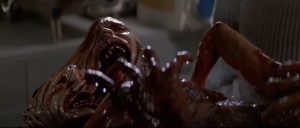
2. Definitive ‘cult classic’
In 1982 nothing stood much chance against the might of Spielberg’s (more friendly) alien visitor. A new decade was in its infancy, one of wealth, excess and optimism. So it is no surprise that few embraced the nihilistic tone and bleak outlook of this sci-fi horror. Yet, as with Blade Runner ― also released on June 25th in the US ― John Carpenter’s The Thing is the epitome of what shapes and defines a cult movie, creating an enduring legacy amongst an ever-growing and devoted fanbase.
1. The perfect horror movie
For his apex mountain (of madness), John Carpenter managed to deliver a prime (and primal) example of horror that fires on all cylinders. Body horror, survival horror, and sci-fi horror; it is the latter’s scientific themes that only add to the film’s pervasive nature; the reality of a world threatened (and assimilated) by an unstable and amorphous shapeshifting form that constantly adapts to its surroundings. This is where we project our own anxieties and fear ― the unknown, the foreign, the ‘Other’ ― briefly recognisable before it bursts forth as a formless, faceless ‘thing’… purely monstrous and ‘alien’ in every sense of the word.
https://www.youtube.com/watch?v=czqSL4TvLzk
In his further celebration of the film, you can read Rich Johnson’s FANGORIA retrospective of Rob Bottin in “Kill it with Fire! John Carpenter’s THE THING at 40”.

Related Articles

